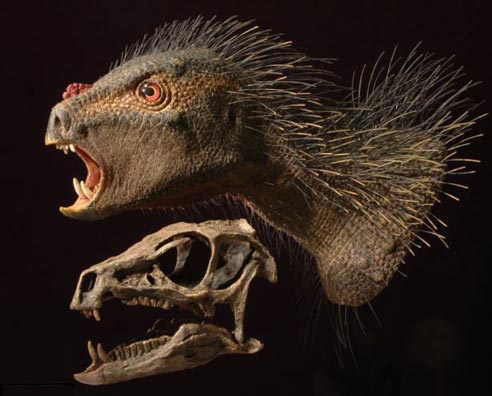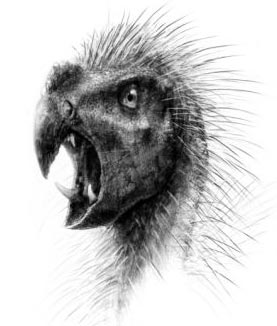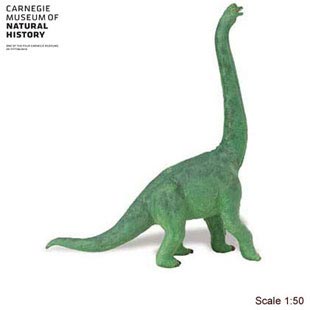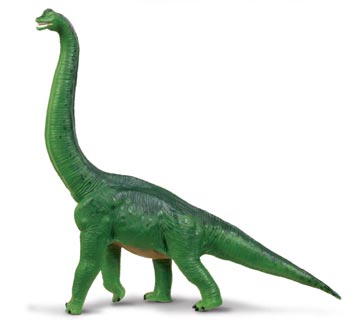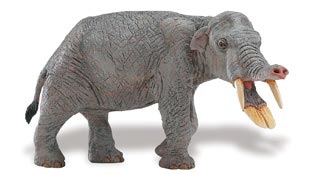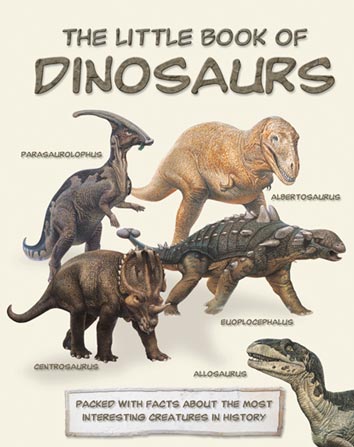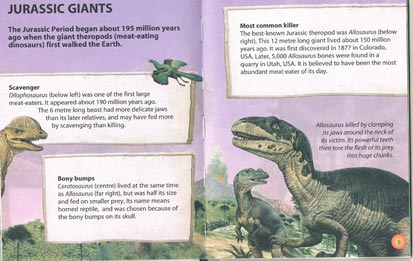Pegomastax – A New Dinosaur with Fangs and Bristles
New Dinosaur Fossil Provides Evidence of the Evolution of Bird-hipped Dinosaurs
A new type of primitive, bird-hipped dinosaur has been scientifically described nearly thirty years after the fossils were first examined. The tiny biped, perhaps no bigger than a domestic cat was a fleet-footed herbivore that roamed what was South Africa approximately 190 million years ago. Named as Pegomastax africanus (the name means thick jaw from Africa), this new genus of dinosaur has been described as a cross between a bird, a porcupine and Dracula as this little reptile had a light skeleton, bristles running along its neck and back and fang-like teeth. Despite its sharp teeth, located at the front of the jaw, Pegomastax has been placed amongst the Heterodontidae, a group of primitive ornithopods (bird-hipped dinosaurs), whose fossils have been found in southern Africa, the United States and Asia.
Pegomastax africanus
A Reconstruction of Pegomastax africanus
Picture credit: Tyler Keillor
The fossils of this dinosaur were recovered from sandstone deposits that were laid down in a desert environment. Note the large orbit (eye-socket) which indicates that this little herbivore had large eyes. Perhaps this animal was nocturnal.
Professor Paul Sereno of the University of Chicago and an acknowledged expert on African dinosaurs, published details of this new dinosaur in the on line journal “ZooKeys”, which also contains a review of other heterodontosaurid dinosaurs including discoveries made in southern England in the 19th Century. Paul first came across the fossil specimens back in 1983 when he was a graduate student doing research at Harvard University. The fossils had originally been discovered after an expedition to the Elliott Formation of Cape Province (South Africa) in the mid 1960s. Recalling the moment when he first saw the fossils, Professor Sereno stated:
“I said, whoa! I realised it was a new species from the moment I set eyes on it.”
However, Paul was distracted by other projects and he did not have the time to describe the specimen scientifically until very recently.
Professor Sereno went on to add:
“I describe it as a bird, a vampire and a porcupine. It had the weight of a small house cat and stood less than a foot off of the ground.”
Heterodontosaurid Dinosaur
The heterodontosaurids are an important group of herbivores which first evolved in the Triassic and persisted into the Cretaceous. Unlike most other dinosaurs, heterodontosaurids had different shaped teeth in their jaws. Some of the teeth at the front of the jaws were sharp and pointed like fangs. The teeth towards the back of the jaw were more square in shape and adapted to crushing plant material. At the front of the jaw there was a thick, blunt beak. The fang-like teeth may have been used to help dig up roots and tubers or perhaps they were used in displays to deter attacks from predators or to settle dispute amongst pack members. Most of the heterodontosaurids discovered to date were relatively small, measuring no more than a metre in length and most of this length being made up by a long tail.
However, this group is related to much larger, herbivorous dinosaurs that evolved later – the iguanodontids, hadrosaurs and the hypsilophodontids.
To view models and replicas of ornithischian dinosaurs such as hypsilophodonts, hadrosaurs and iguanodontids: CollectA Age of Dinosaurs (Popular Models).
An Illustration of Pegomastax africanus
Picture credit: Todd Marshall
This new dinosaur discovery represents one of the smallest genera of dinosaur known, to read about a relative of Pegomastax, Fruitadens discovered in the United States: Fruitadens, a tiny Ornithischian dinosaur.


